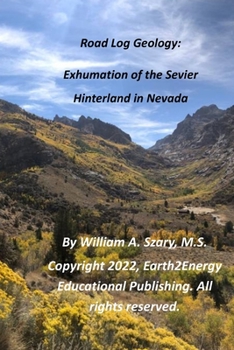Road Log Geology: Exhumation of the Sevier Hinterland in Nevada
The Sevier hinterland was assumed to occupy the upper thrust plate in Nevada pushing Paleozoic Carboniferous rocks over older Paleozoic and Precambrian rocks in the northeastern part of the state. Extreme erosion exhumed portions of the hinterland accompanied by later Tertiary detachment faulting and basin and range extension. Estimates of erosion appear closely related to massive amounts of rocks shed from upwards of 11,000 feet equivalent to the highest peaks of the Rockies and Cascades. The hinterland of the Sevier orogenic belt in Nevada was interpreted as an ancient high elevated orogenic plateau. Neoproterozoic to Triassic rocks are exposed beneath a regional Paleogene unconformity. Erosional exhumation occurred along with synorogenics between the top of the Triassic and Paleogene sections. A direct structural link occurred between two through going thrust systems connected with southern Nevada. Surface breaking normal faulting dismembered the orogenic highland producing the high structural relief observed today as occurring during the post-Oligocene. High exhumation occurred within the hanging walls of major thrust faults indicate contractional deformation occurred in the orogenic plateau. Much of the Sevier interior was an eroding highland composed of pre-orogenic rocks with low structural relief. Chapter 1 introduces Nevada's Sevier uplift. Chapter 2 presents evidence for Sevier exhumation. Chapter 3 introduces Nevada's exhumed stratigraphy. Chapter 4 provides a road log through the Sevier exhumation. Chapter 5 presents a summary of the Ruby Mountain Detachment which is believed to have contributed to exhumed erosion of the Sevier hinterland.
Format:Paperback
Language:English
ISBN:B0BFTWFBKG
ISBN13:9798354193844
Release Date:September 2022
Publisher:Independently Published
Length:168 Pages
Weight:0.51 lbs.
Dimensions:0.4" x 6.0" x 9.0"
Customer Reviews
0 rating





